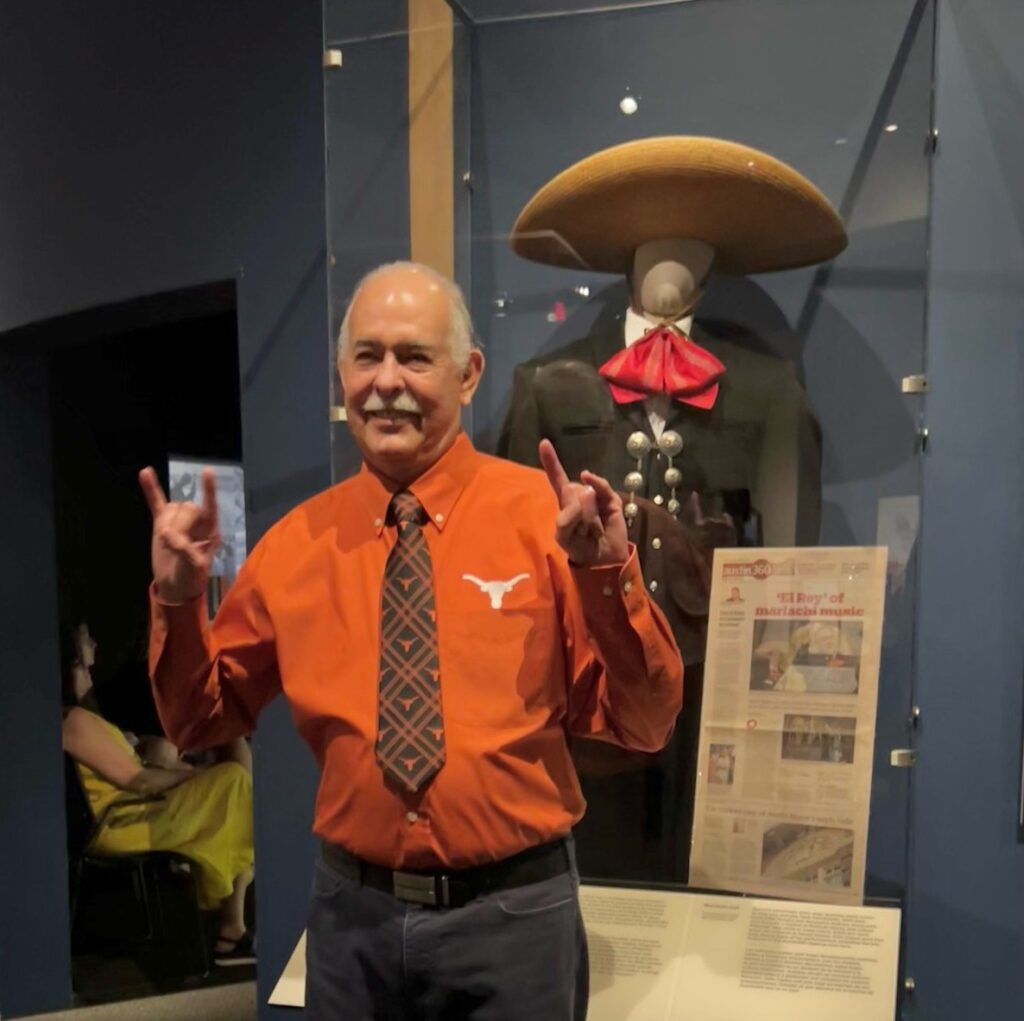Zeke Castro, known in Austin as the “El Rey” of mariachi music, was honored on July 13 at the Bob Bullock Texas State History Museum for his significant contributions to the advancement of mariachi music.
As part of the celebration of his legacy, Castro’s traje—the black and silver suit he wore while performing—is now on display in the museum’s “Story of Texas” music gallery. His exhibit also features his sombrero and boots, alongside tributes to other legendary Texas musicians such as Willie Nelson, Stevie Ray Vaughan, Beyoncé, and ZZ Top.
Castro’s musical journey began in 1948. At just nine years old, he participated in the inaugural Junior String Project created by the University of Texas, where he also met his future wife, Alice “Aly” Mercado—later affectionately known as “The Mariachi Mama” by Castro’s students.
In 1961, Castro graduated from the University of Texas with a degree in viola pedagogy—the study of teaching string instruments.
Castro’s passion for mariachi music blossomed in 1973 when he began performing as a violinist. He eventually transitioned into education, teaching mariachi at Fulmore Junior High and Travis High School in Austin. He is credited with founding multiple mariachi programs in Texas, expanding the University of Texas at Austin Mariachi Ensemble, and founding the University of Texas at Austin Mariachi Longhorn Camp for high school students.
Castro’s students often recall his enthusiasm for teaching and his ability to foster a strong sense of community. During the celebration at the museum, a former student, Alan Chen, shared that Castro would tell his class, “Mariacheros make good compañeros”—meaning mariachi musicians make good companions. Through his teaching, students learned the values of integrity, leadership, collaboration, and friendship.
Aly Castro expressed pride in her husband’s accomplishments, describing him as a “transformational leader” whose mariachi programs continue to carry on his legacy.
According to Zeke Castro, mariachi music is more than just playing the notes.
“Mariachi music is playing the feeling of the music. That’s what you’re trying to get across,” Castro explained. He emphasized that every mariachi song has a hidden meaning, and that to truly perform it, musicians must discover and convey that meaning to their audience.
“That’s what differentiates mariachi music from band, orchestra, and choir,” he said. “You’re sending a sensation out to the people you’re playing for.”
Castro reflected that it took him years to fully understand this, describing the experience as if the music had been “calling to him.”
“When it finally dawned on me, it was the best thing that ever happened to me.”








